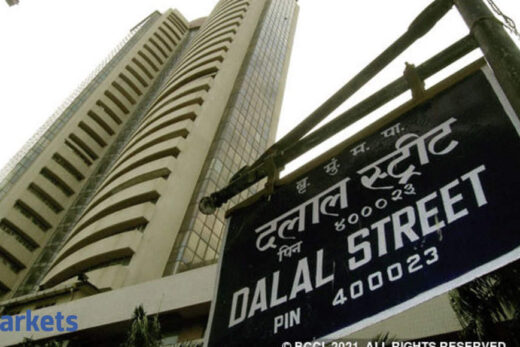What are the data points which you are analysing?
The strength of the market is quite amazing. For the last 18 months, we have not seen a single pullback of more than 5% to 7% on the index level. More importantly, it had two data points that seem to suggest that the strength has been super one. If I look at over the last five years, how many stocks have doubled out of the top 500 names?
We are getting a score of close to about 70%. These are typically very high readings at any point of time over the last 20-25 years. If they ploughed back data points, this would be possibly one of the strongest readings. So the breadth of the market has been supremely good.
Having said that, in this dream, one needs to be slightly more circumspect when we look at the next 18 to 24 months and which is the second point that I want to talk about now. The return on equity profile of the top 500 companies have steadily declined over the last 20 years. If we break down from 2004 to 2021 and to blocks of five years each, during the 2004 to 2008 period there were as many as 220 odd stocks which had an ROE of close to 20% and earnings growth of 15%. In the last five years, that number has come down close to about half of that number or 100 odd names. This is important because this contradicts the overall strength of the market.
When 70% of stocks have at least doubled over the last five years and when we look at the disconnect, fewer stocks are actually making a reasonable amount of profit growth and return profile. Something has to give and which is why we think over the course of the next 18 to 24 months, while we are positive on the overall economic environment shaping up, we would be a lot lot more selective going ahead rather than believing that everything under a broad brush will catch the momentum.
Anas Junaid of the Hurun rich list says one of the reasons why there is a lot of widespread wealth effect in the country is that Indian companies are getting much more efficient in capital allocation. Debt has been reduced and ROEs of more companies in India are on a improving trajectory. Does it appear durable?
There has been a massive release of cash flows and overall debt levels have come off and with that, the balance sheet of India Incorporated is possibly at the best we have seen in the last 20 years. That is really very strong for the overall medium term horizon from an investment point of view as far as it is related to investment in the real economy. However, the disconnect that I observe is all pervasive.
We do see that there are quite a few companies which have done dramatically well; they have buttressed their balance sheet quite significantly and then there are also a lot of other companies which have just been middling through. In this kind of a phase, I would not want to generalise it. But it is true that the better run companies have actually done a phenomenal job both in terms of managing the profit and loss statement, wherein they have exhibited a lot of cost control over the last 18 months. Also, the balance sheets have corrected a lot of capital structure due to inventory gains.
So what does this tell you about what happens between FY22 and FY25? How have you positioned your portfolio to benefit from this for the next three years?
That really is the key call. Ultimately money has to be made. What will be the incremental rate of change either between balance sheets or between the business environment over the next three years? We have a very simple framework, a 2 by 2 framework. On one side — the X axis — we plot companies where we think either the demand environment or the supply dynamics have improved materially with respect to how they are currently likely to operate compared to the pre-Covid picture. So with respect to time, the demand environment and the supply dynamics have improved. So, that is on one axis. The other axis is a very simple kind of axis wherein we assess whether the competitiveness score with respect to the world has improved.
So we are essentially talking about two relative scores. If I were to talk about say four or five big themes that are there in the markets, let us take the case wherein a theme which has done best on both the axis and over there is exports. It has dramatically improved its competitive positioning with respect to the world as well as with respect to itself over the course of the pandemic. It is not only IT services, it could be select pharma, API, chemicals and also a lot of engineering goods and capital goods companies which have done a significant amount of capex and are raring to go and will benefit significantly. That is the one space where we think a maximum rate of change delta can come through.
Similarly we think on the investment side, especially on infrastructure, the government’s balance sheets have improved quite dramatically post Covid in which case, it is likely to go through better investment climate as well as the fact that real estate and private capex is also likely to pick up speed.
This again is on the right top side both with respect to itself as well as from competitiveness relative to the rest of the world. Coming to the other extreme, where things can be a bit underwhelming, I would say that on the consumer staples or on the bottom of the pyramid, the bottom 50% of India has possibly seen some amount of income erosion and while the government has done what it could in terms of say food support, etc, it has definitely impacted the overall savings profile and income profile and therefore compared to where they were pre-Covid. they are quite worse off.
Again compared to the rest of the world, the consumers have got a lot of stimulus cheques from the governments which have been missing in India. Therefore stimulus or demand bounce back at the bottom of the pyramid might surprise negatively and this is a space that we are underweight on and consumer discretionary is somewhere in between. A lot of jobs are likely to be created and that will benefit the consumer discretionary spending. We have a more positive view here. So these are the broad four buckets where we have positioned our portfolios.



